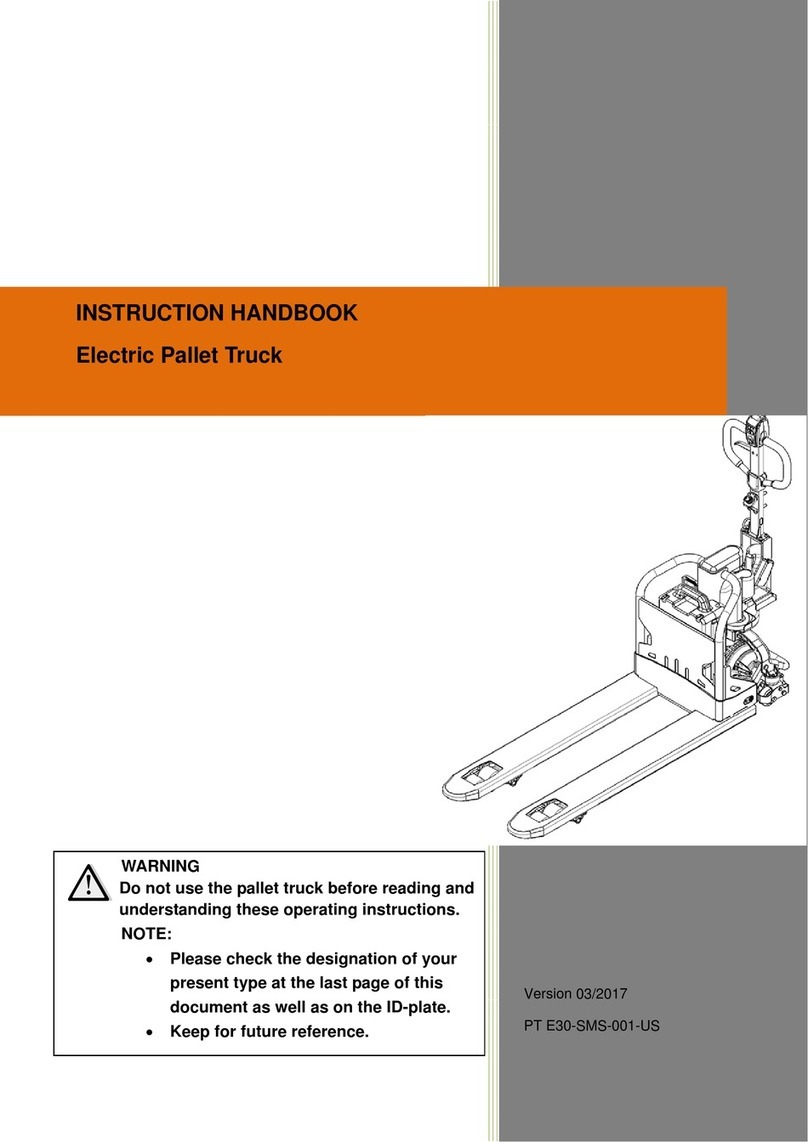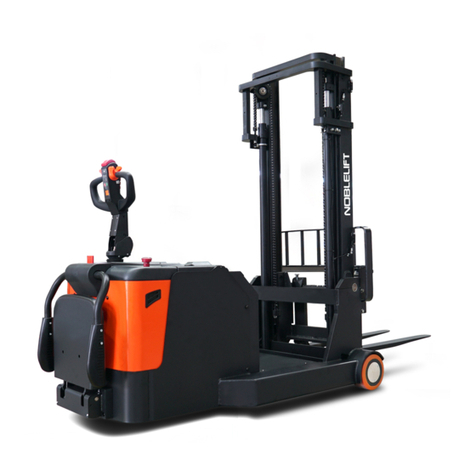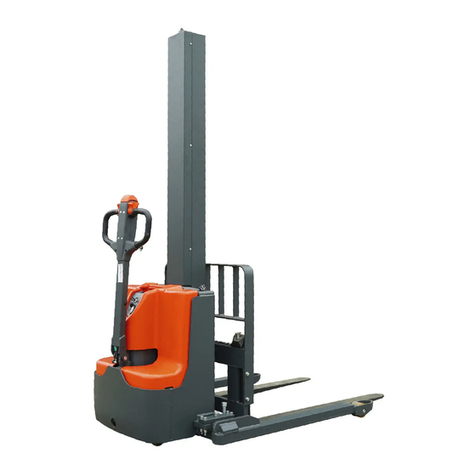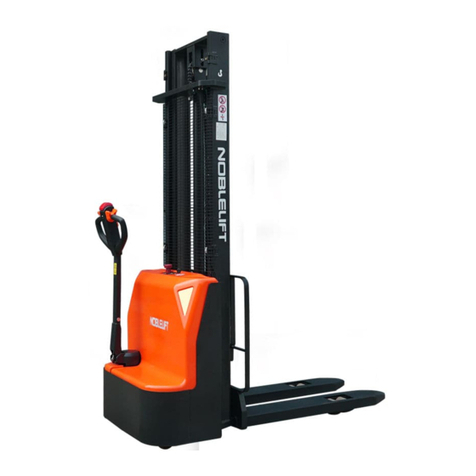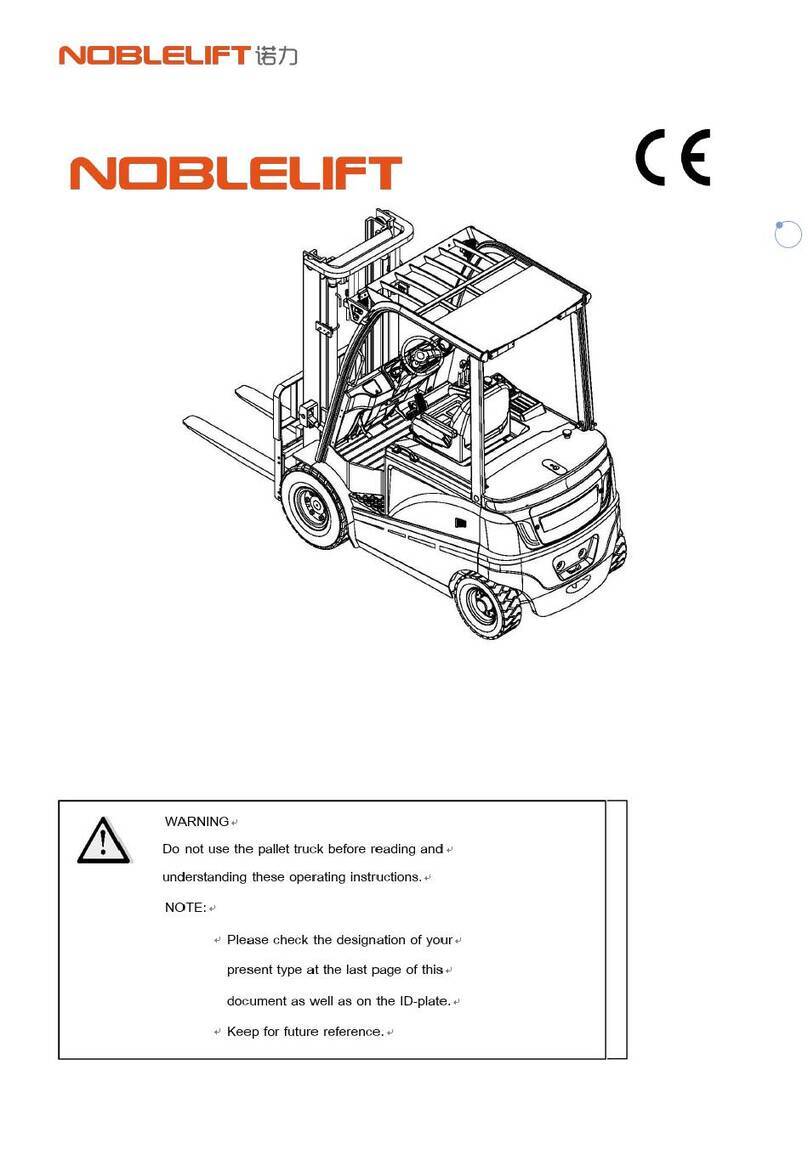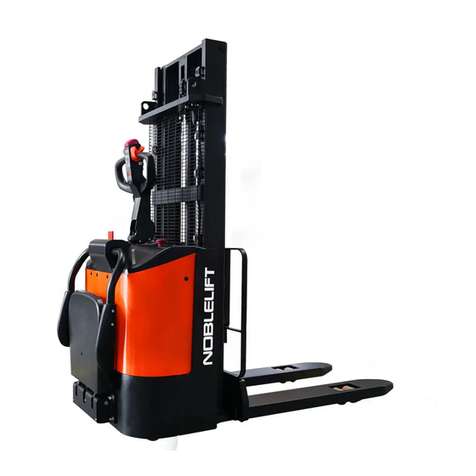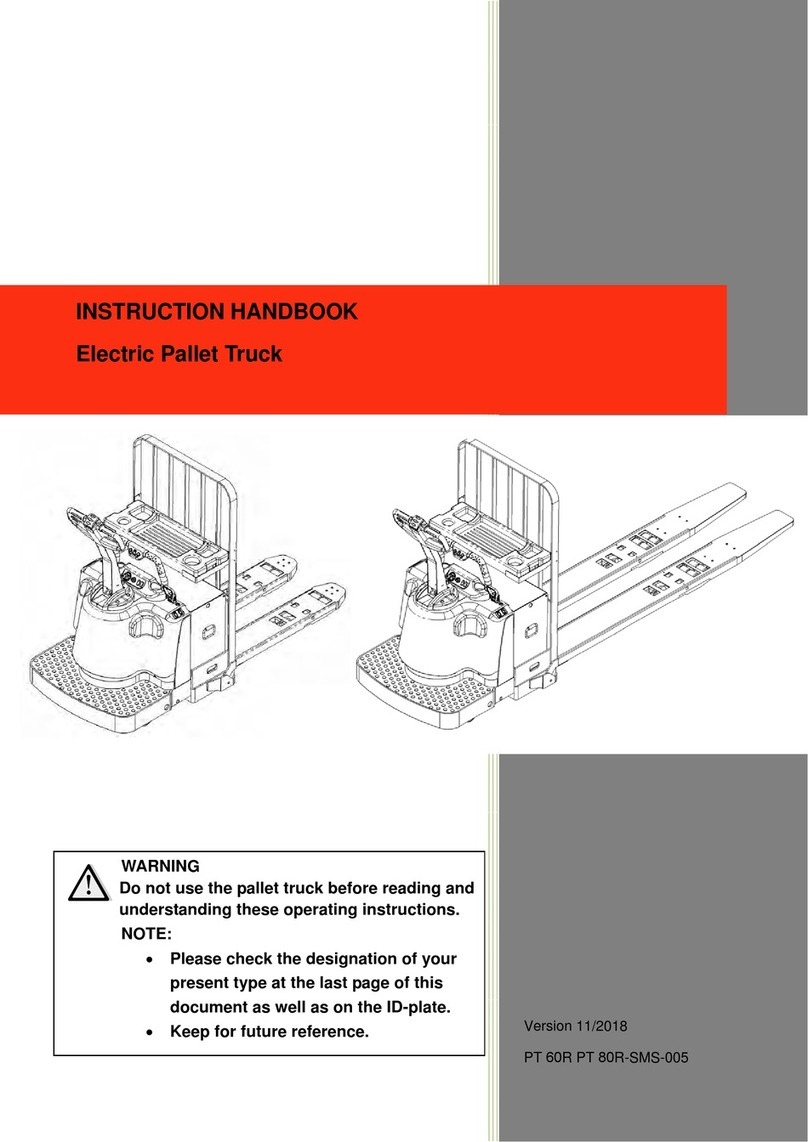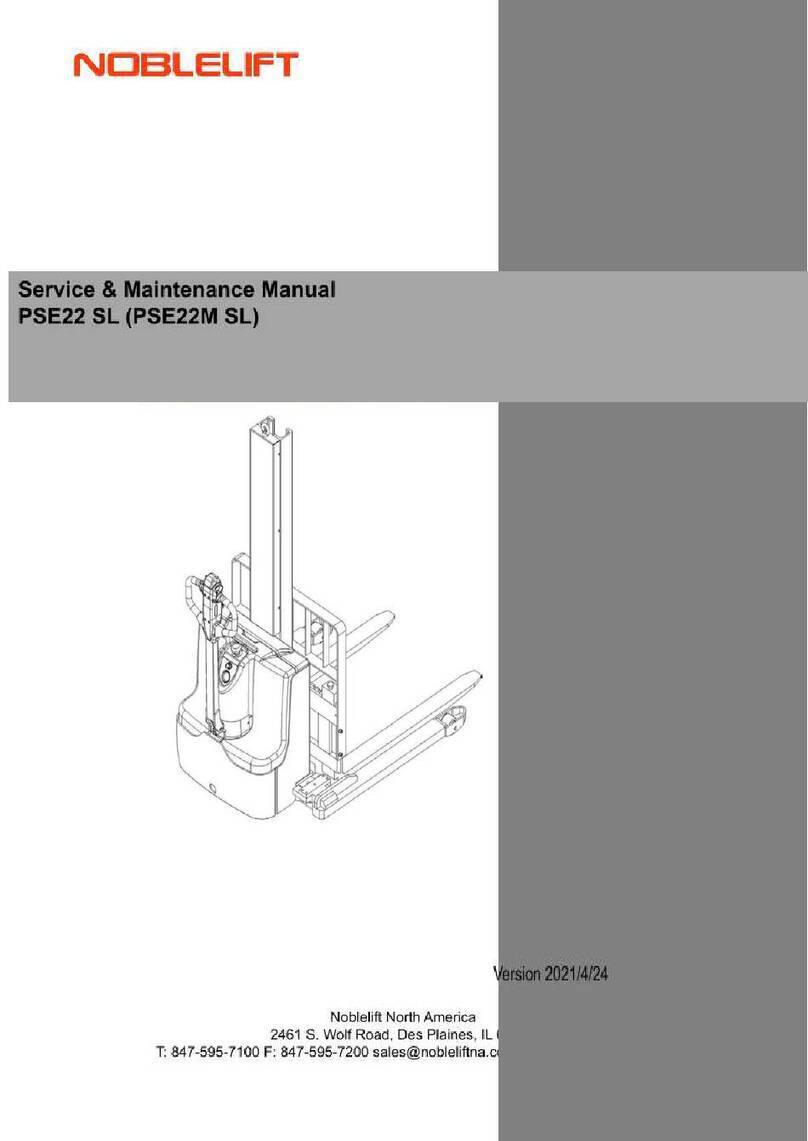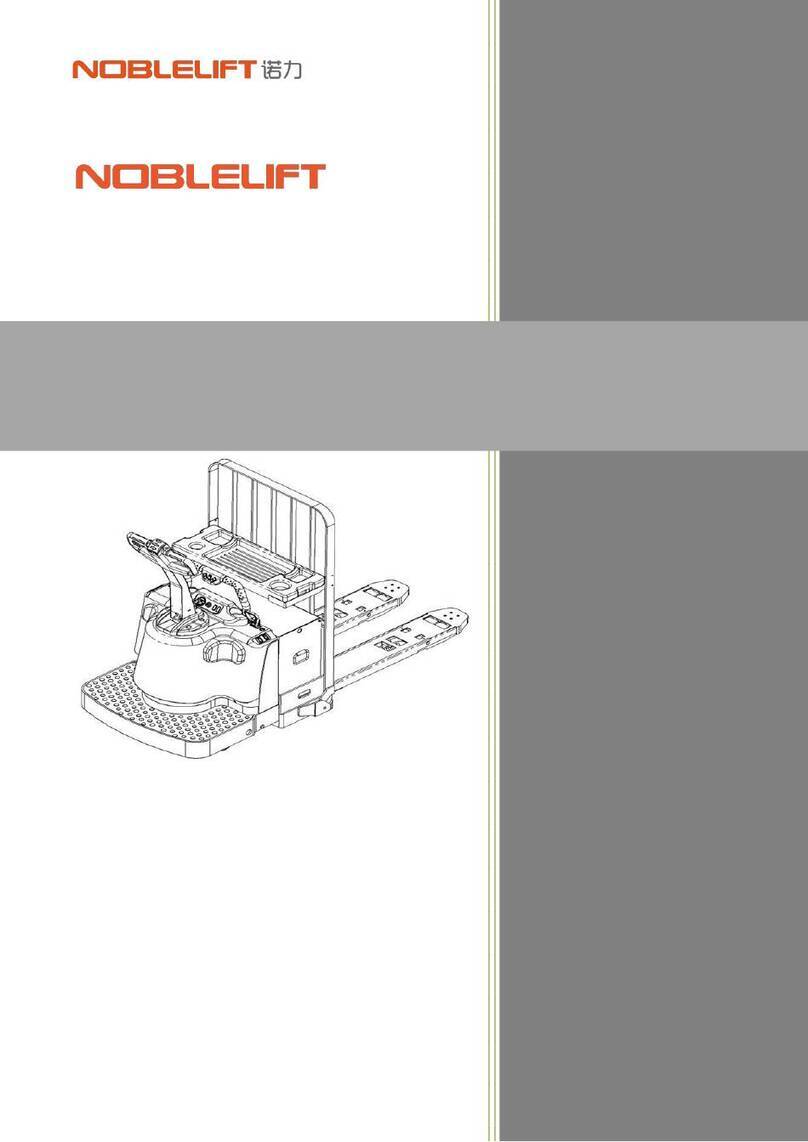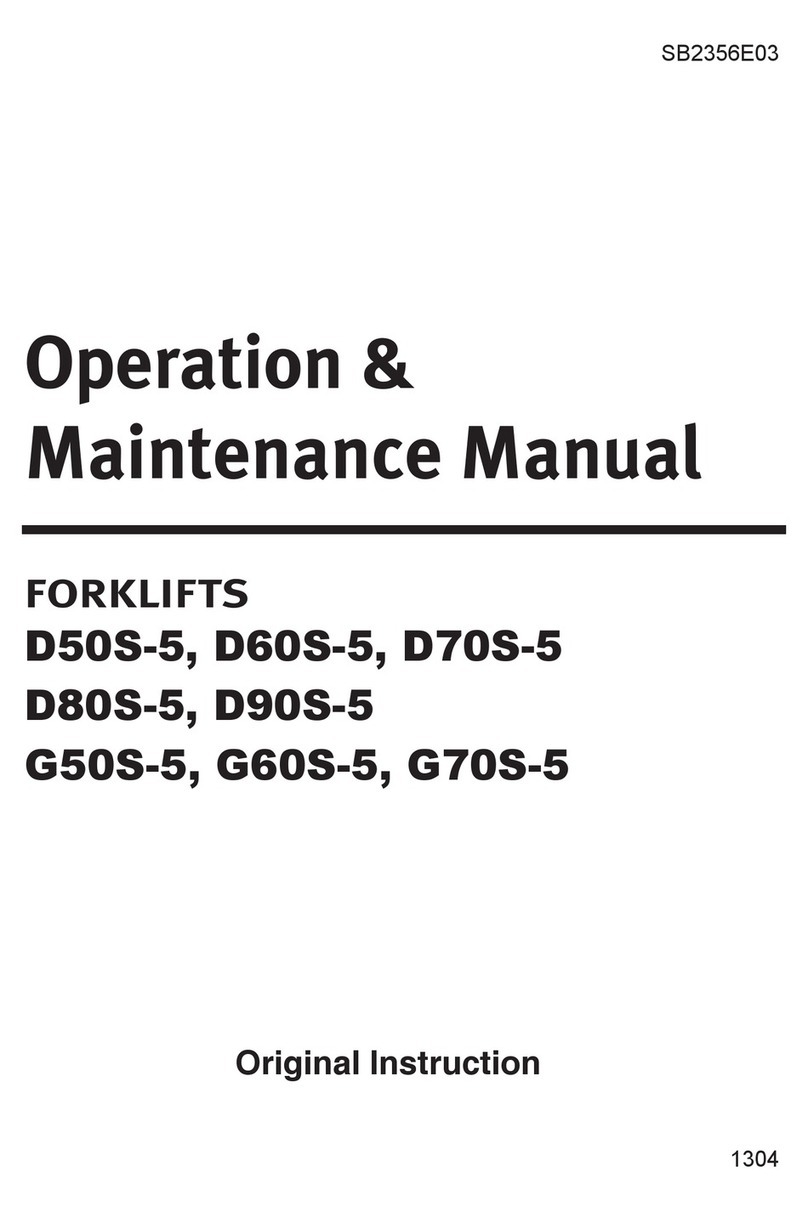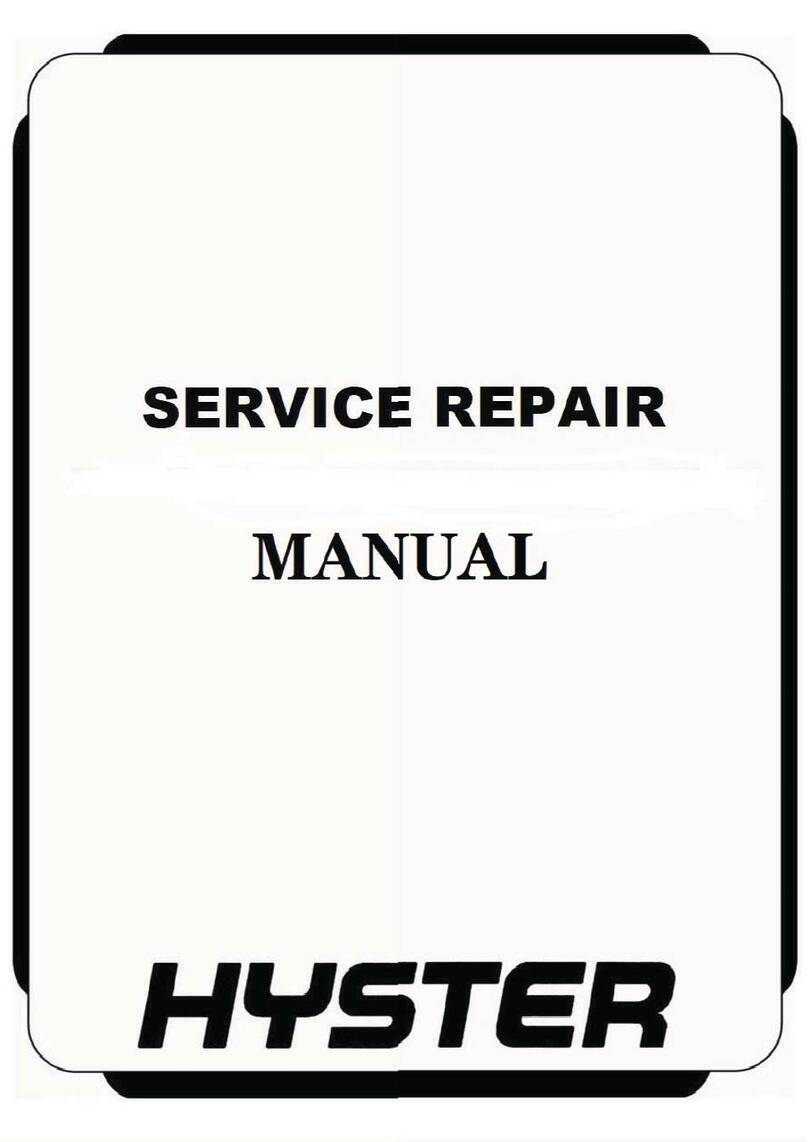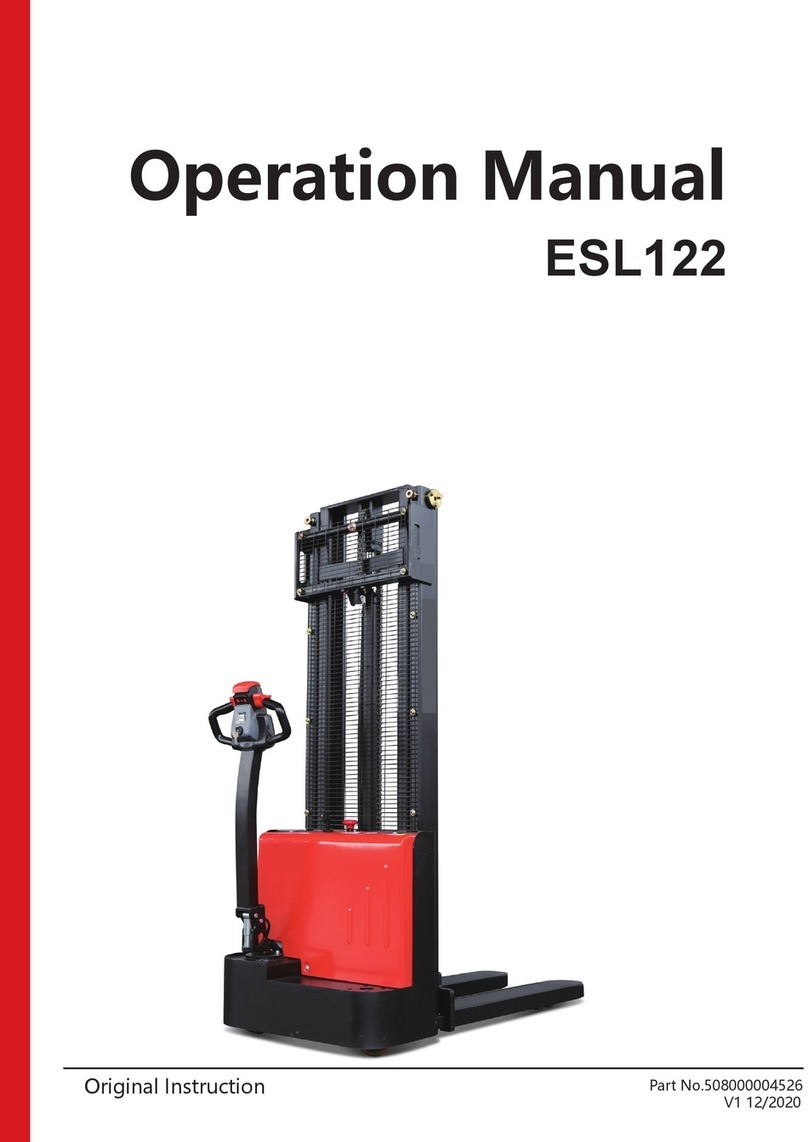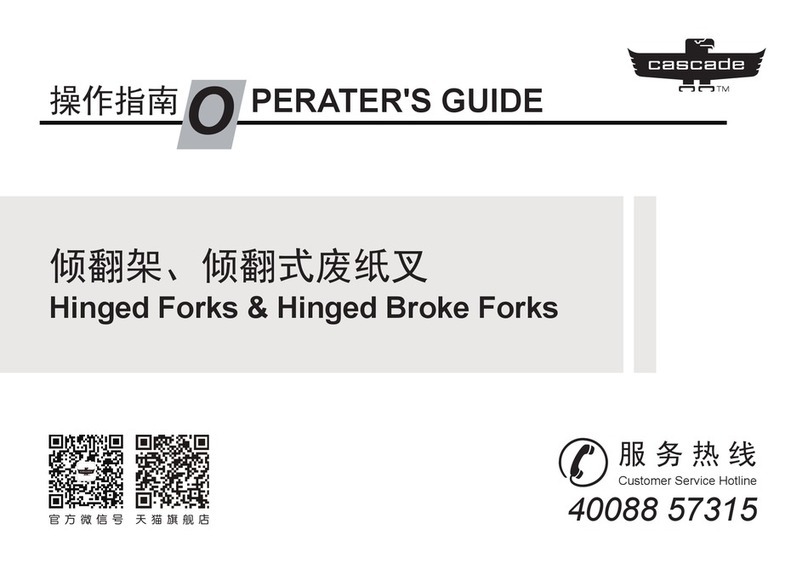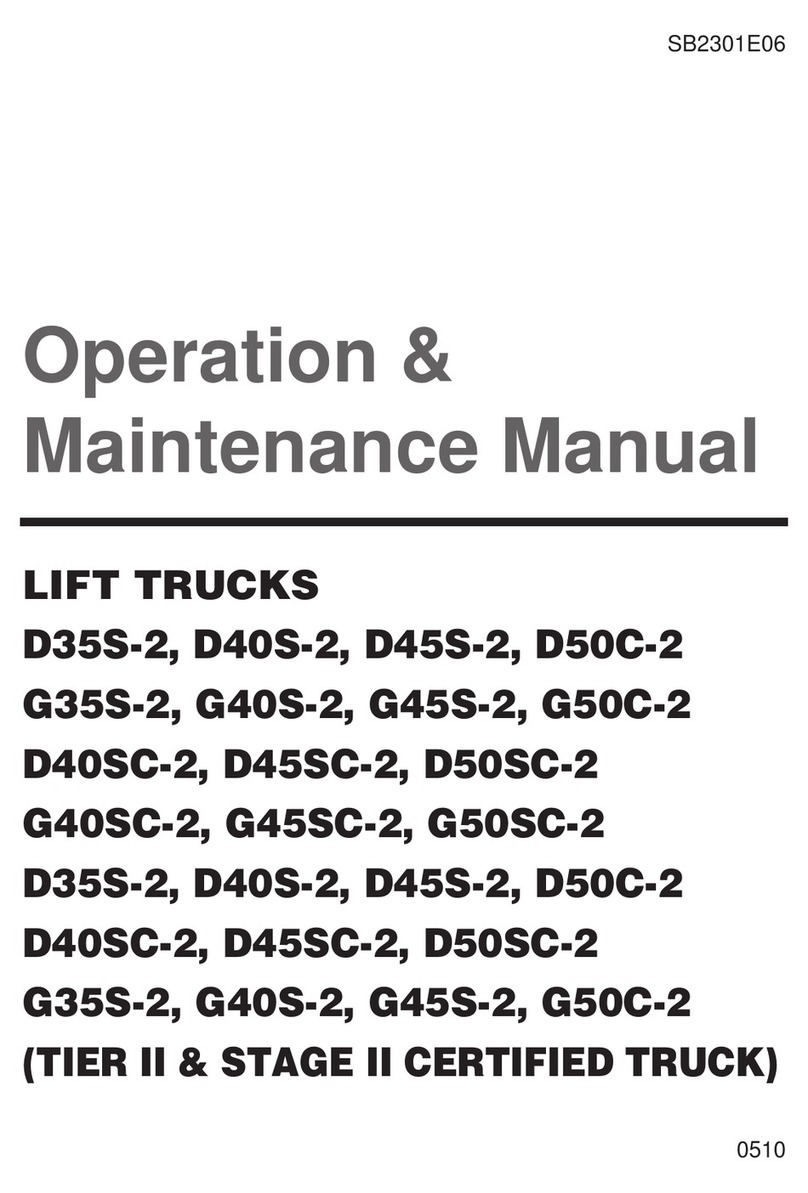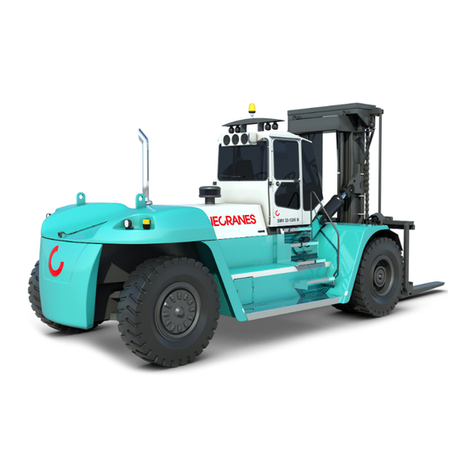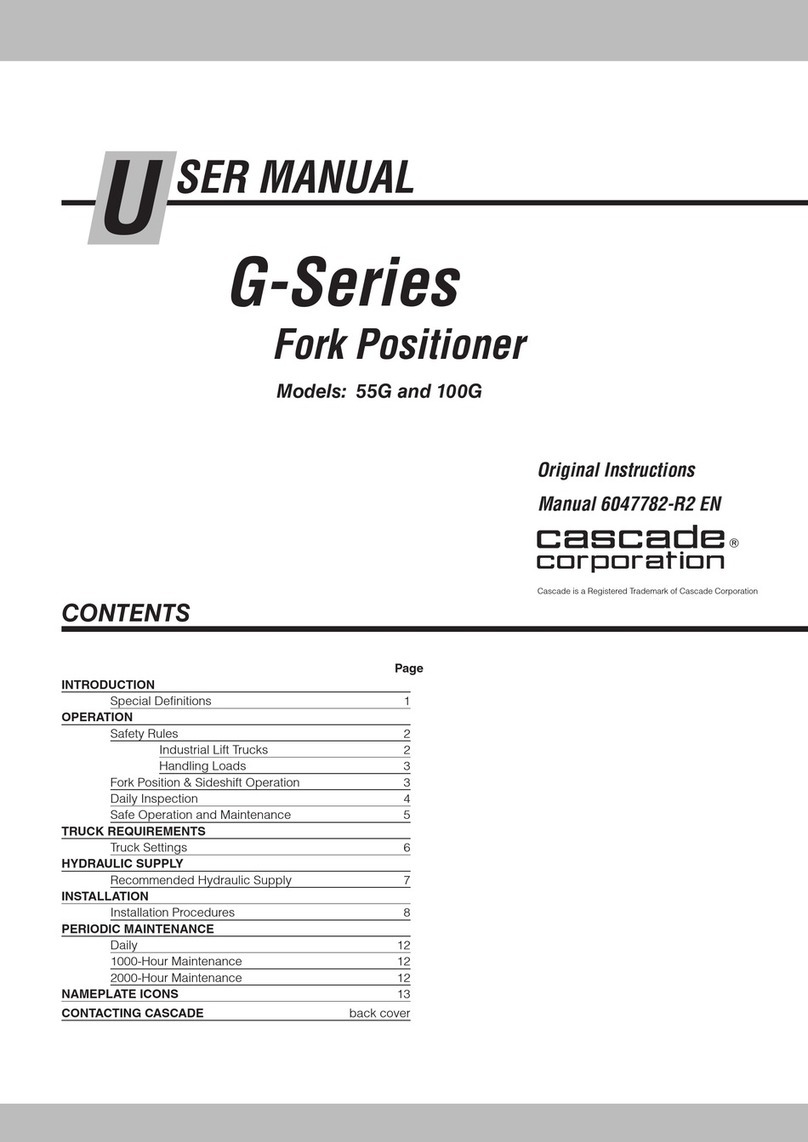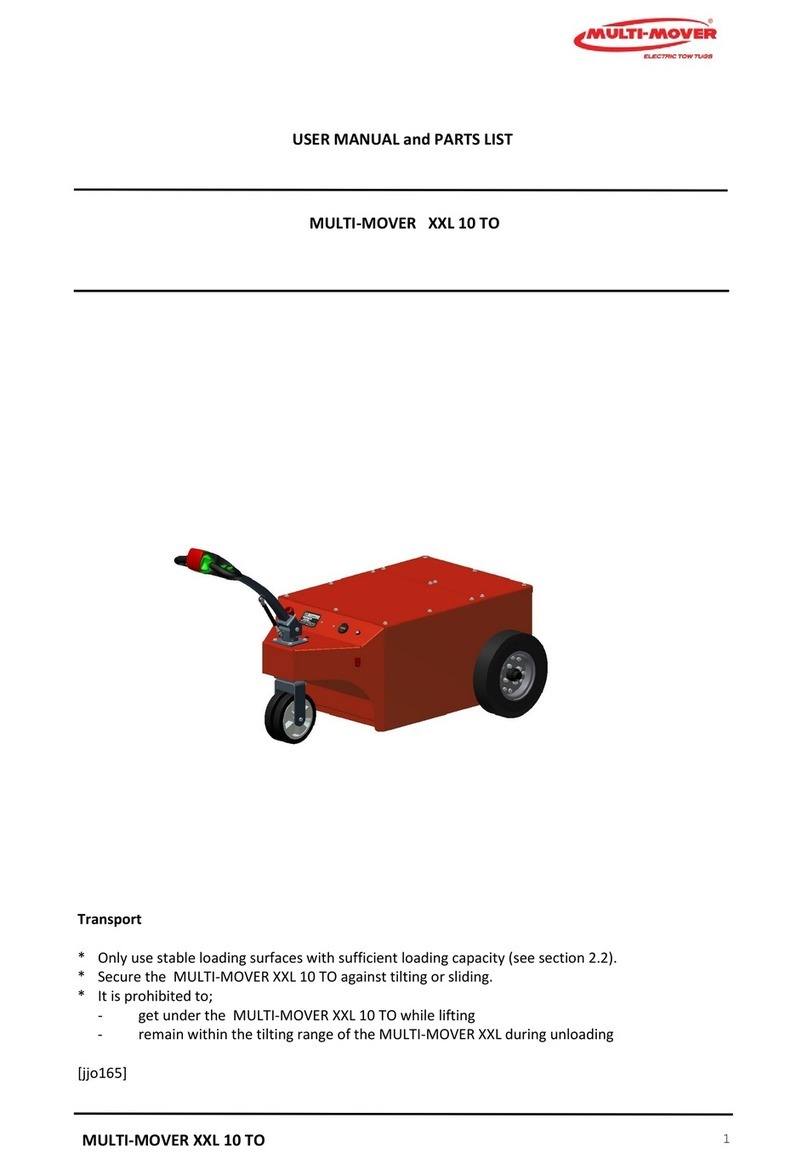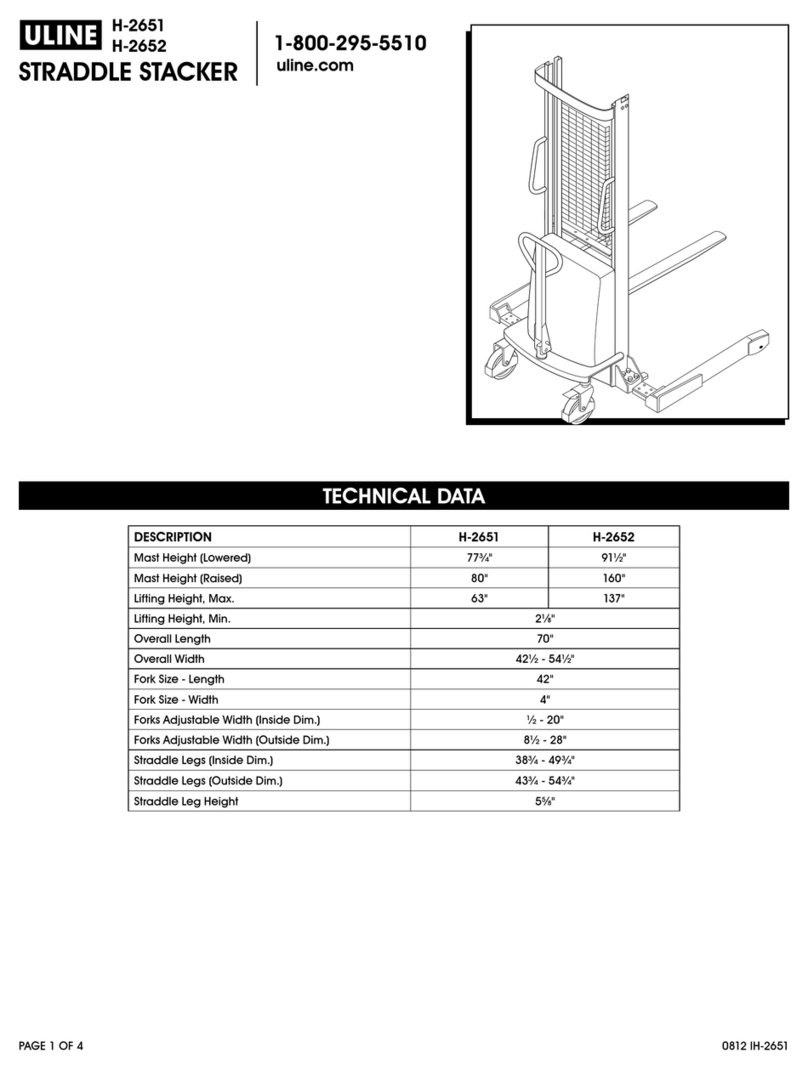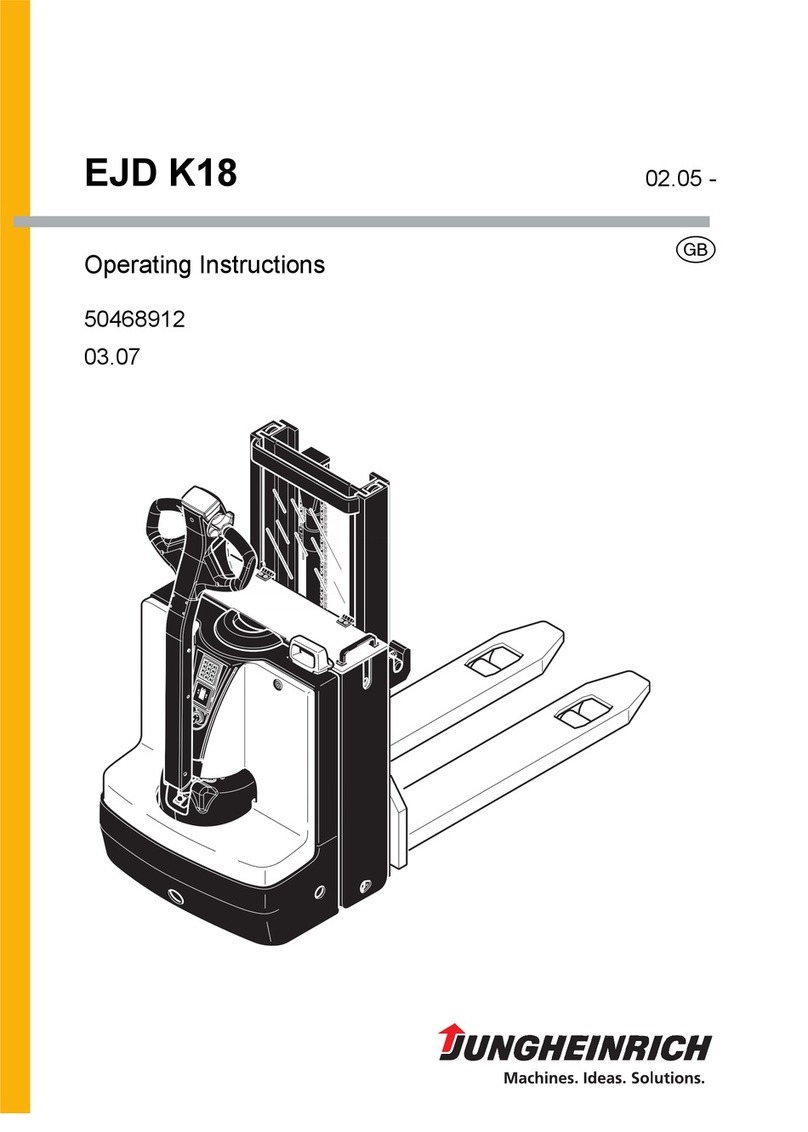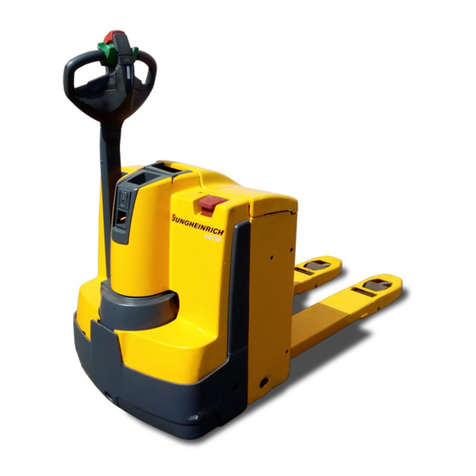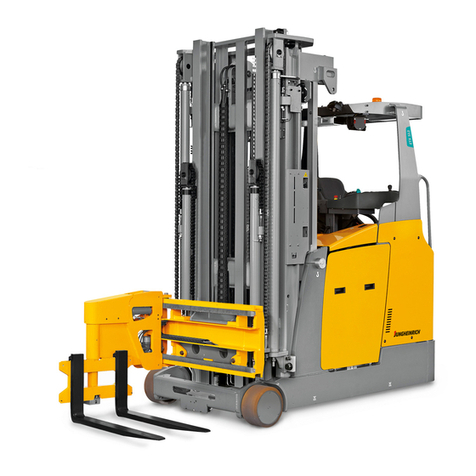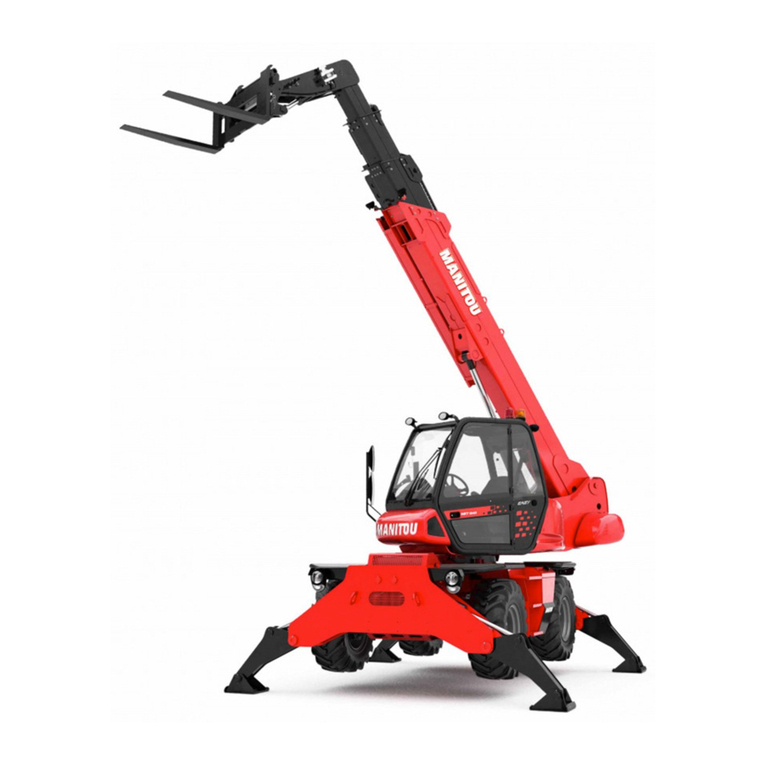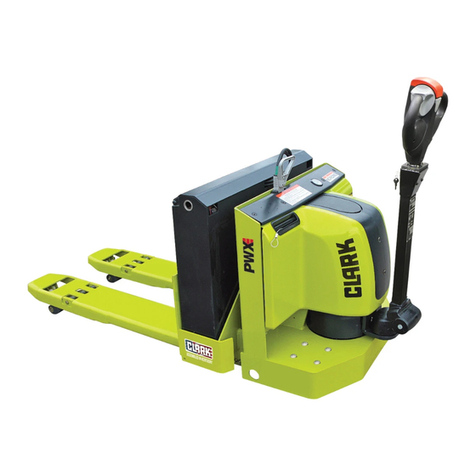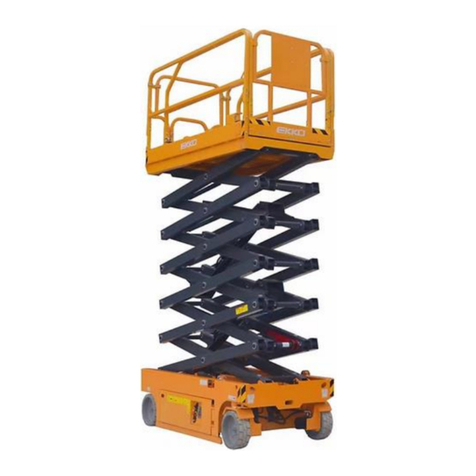(7) If the distance between loads‘ center of gravity and the fork arm is no more than 500mm, the
maximum load shall be the rated capacity. If the distance between loads‘ center of gravity and the fork
arm is more than 500mm, the maximum load shall be less than the rated capacity;
(8) When carrying loads, the main frame should tit backwards to the maximum extent and the
fork arm should be in contact with the goods. Raise the fork to about 200mm away from the
ground before driving;
(9) Standing under the fork and on the lifting fork are forbidden;
(10) The initial velocity should not be too fast when lifting and lowering goods;
(11) Never operate the forklift and accessories at places other than the driver's seat;
(12) When the main frame is moving forwards and backwards to the maximum extent, or
when the fork is lifted to its maximum height, the operator must rapidly set the lever to the neutral
position;
(13) When the main frame is lifting, driving or turning of the forklift is not allowed;
(14) When driving the forklift, drivers should pay attention to pedestrians, road obstacles and
potholes, and also note the gap above the forklift;
(15) Drivers should be very careful when driving on ramps. When driving on a ramp with slope
gradient more than one-tenth, do move forward for up-hilling and backward for down-hilling.
Never perform steering during up-hilling ad down-hilling process. And avoid loading and unloading
when the forklift is down-hilling;
(16) Slow down when steering on wet or slippery road surfaces; be very careful and drive
slowly when driving on docks or temporary boards;
(17) For forklifts with lifting height greater than 3 meters, users shall be careful to guard
against falling down of the goods overhead and take protective measures if necessary;
(18) Do not carry unfixed or loosely stacked goods and be careful when handling goods with
large size;
(19) When driving the forklift with load, emergency braking should be avoided;
(20) Before leaving the forklift, lower the fork down to the ground, set the lever at neutral
position and disconnect power. In case of parking on a ramp,
apply the parking brake. Use wedge pads to fix the wheels if you need to park for a long time;
(21) The safety valve pressures of multiple unit valve and steering device have been tuned up
before leaving the factory. During use, users
shall not adjust it, because excessive pressure may cause damage to the entire hydraulic system
or its components ,and the motor;
(22) Tire inflation pressure shall be in line with that stipulated on the "Air pressure" plate;
(23) When moving with no load, forklift with accessories shall be operated in a way as if
carrying a load.
Ⅴ. Charging of accumulator cells
(1) When charging the accumulator cells for the first time and further charging, users should
be in strict compliance with the instructions;
(2) When operating the forklift, if the accumulator voltage decreases to 41V, or that of its
single cell drops below l.7V , or the instrument alarms, users shall immediately stop using the
forklift and replace the accumulator or recharge it before further use;
(3) Check the specific gravity, liquid level and temperature of the electrolyte from time to time
during the charging process;
(4) Forklift must be recharged as soon as possible after use. Never leave the forklift
uncharged longer than 24 hours. When charging, pay attention to prevent
insufficient charging and over-charging, so as not to damage the battery;
(5) Users should conduct balanced recharging to the forklift in normal use once a month, so
as to adjust the proportion among the accumulator units.
Please refer to the relevant sections of this Mannual for detailed charging and maintenance
methods.





